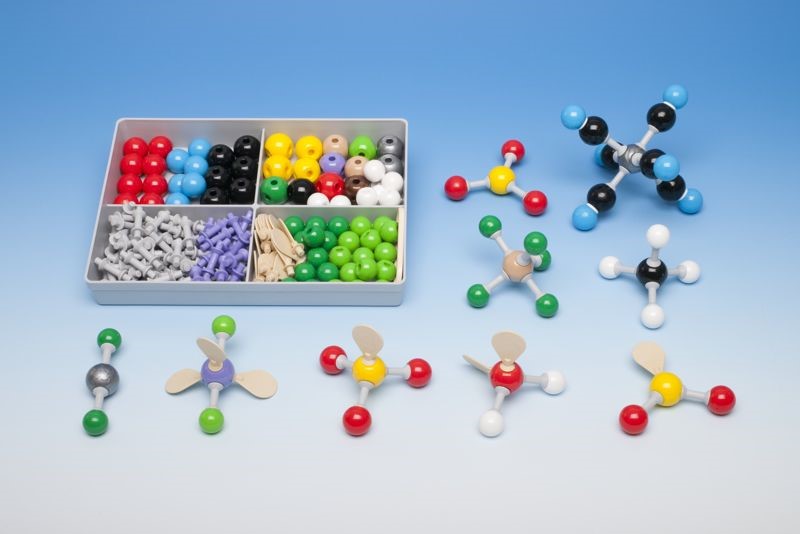แบบจำลองอะตอมโมเลกุลทางเลือกสำหรับการสอนเรื่องทฤษฎีแรงผลักระหว่างคู่อิเล็กตรอนในวงเวเลนซ์
Main Article Content
Abstract
Karntarat Wuttisela
รับบทความ: 22 ตุลาคม 2557; ยอมรับตีพิมพ์: 3 ธันวาคม 2557
บทคัดย่อ
แบบจำลองอะตอมโมเลกุลที่ทำจากโฟม เป็นเครื่องมือทางเลือกสำหรับการสอนเรื่องทฤษฎีแรงผลักระหว่างคู่อิเล็กตรอนในวงเวเลนซ์ ซึ่งให้นักเรียนสร้างโมเลกุลที่อะตอมกลางมีอิเล็กตรอนคู่โดดเดี่ยว (ระบบเอบีอี) และอะตอมกลางไม่มีอิเล็กตรอนคู่โดดเดี่ยว (ระบบเอบี) แบบจำลองประกอบด้วยพอลิสไตรีนโฟมใช้แทนธาตุสามัญ เข็มหมุด 2 อันแทนจำนวนอิเล็กตรอนคู่โดดเดี่ยว และไม้จิ้มฟันแทนพันธะ อุปกรณ์ที่จำเป็นต้องใช้ราคาถูกและหาง่าย แต่ในขณะเดียวกันช่วยกระตุ้นให้เกิดการอภิปรายกันในเรื่องรูปร่างโมเลกุล มุมพันธะ จำนวนอิเล็กตรอนคู่โดดเดี่ยวล้อมรอบอะตอมกลาง ขนาดของอะตอม และสีของอะตอม ไม่เหมือนผลิตภัณฑ์ที่ขายตามท้องตลาด แต่ละธาตุไม่มีรูเพื่อเชื่อมต่อ
คำสำคัญ: แบบจำลองอะตอมโมเลกุล ทฤษฎีแรงผลักระหว่างคู่อิเล็กตรอนในวงเวเลนซ์ แบบจำลองอะตอมโมเลกุลจากโฟม
Abstract
A foam molecular model is an alternative tool for teaching the valence shell electron pair repulsion theory that allows students to build molecules in which the central atom has lone pair electrons (ABE system) and in which the central atom has no lone pair electrons (AB system). The model consists of different sized and colored polystyrene foam balls representing the common elements, two pins for a number of lone pair electrons, and a toothpick for a bond. The required materials are inexpensive and easy to obtain, but at the same time provide stimulation for discussion about molecular shapes, bond angles, number of electron pairs surrounding the central atom, atomic sizes, and atomic colors, unlike commercial products, each element has no holes to plug in to.
Keywords: Molecular model, Valence shell electron pair repulsion theory, Foam molecular model
Downloads
Article Details

This work is licensed under a Creative Commons Attribution-NonCommercial 4.0 International License.
References
Birk, J. P. (1988). Follow the bouncing balls to an understanding of molecular structure. Journal of Chemical Education 65: 1055-1056.
Chang, R. (2007). Chemistry. 10th ed. McGraw-Hill. New York. pp. 410-417.
Donaghy, K. J., and Saxton, K. J. (2012). Connecting geometry and chemistry: A three-step approach to three-dimensional thinking. Journal of Chemical Education 89: 917-920.
Gillespie, R. J. (1992). Multiple bonds and the VSEPR model. Journal of Chemical Education 69: 116.
Kemp, K. C. (1988). A novel, simple, and inexpensive model for teaching VSEPR theory. Journal of Chemical Education 65: 222.
Niac, G. (1978). Balloon models for organic molecules. Journal of Chemical Education 55: 303.
Pierce, J. B. (1959). Molecular models: A general chem.istry exercise. Journal of Chemical Education 36: 595.
Web Elements Shop. Molymod@ molecular geometry (VSEPR) kit. http://www.webelements.com/shop/product.php/11/molymod_molecular_geometry_vsepr_kit, accessed Oct 2014.
Wikipedia. CPK coloring. http://en.wikipedia.org/wiki/ CPK_ coloring, accessed May 2014.
